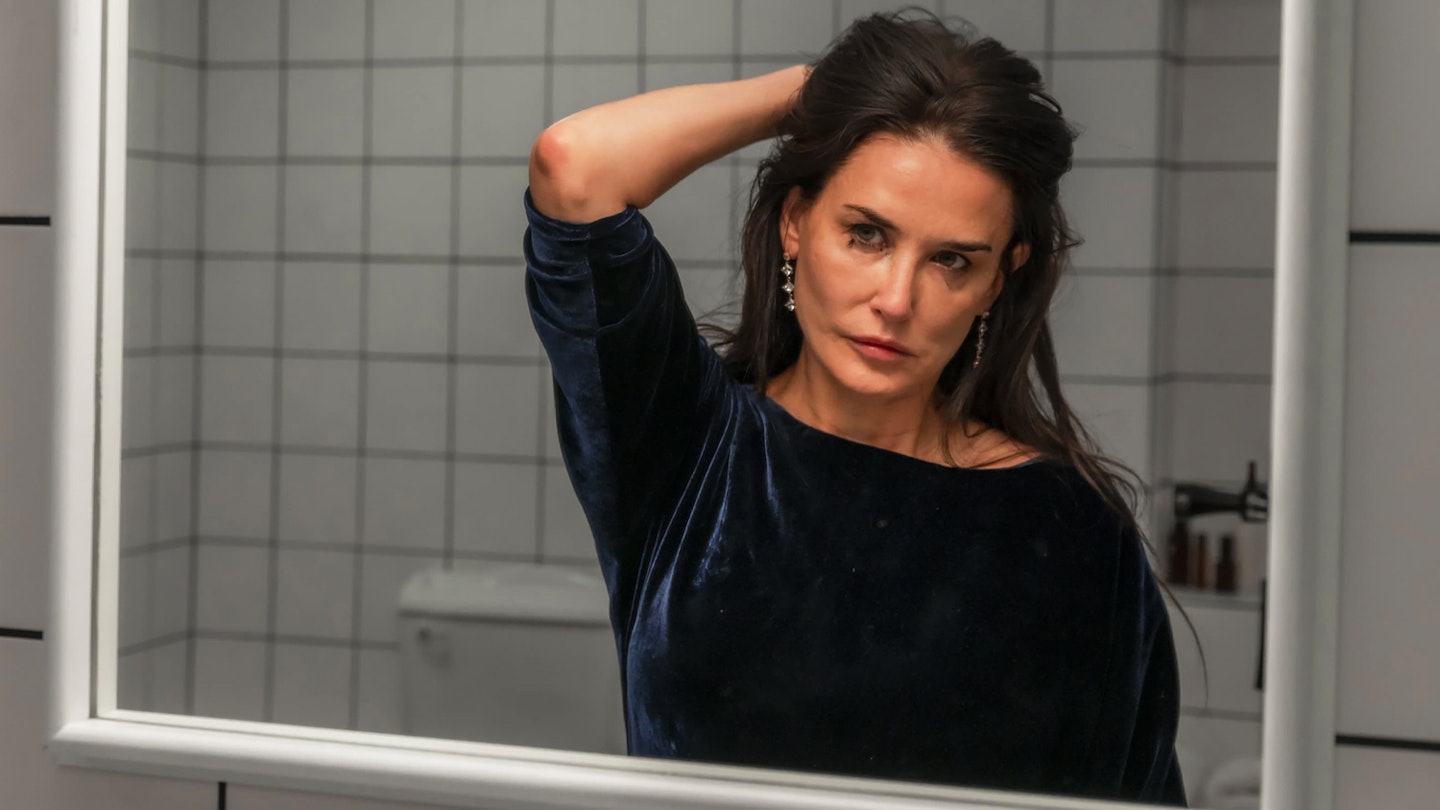Writer-and-director Coralie Fargeat’s viscera-splattered follow-up to 2017’s Revenge is about as subtle as a bludgeon to the head, or, indeed, a needle to the thigh. Thankfully, it’s also much more perversely enjoyable than either of those experiences. Just as long as you’re not squeamish at the sight of blood, cascades of organs and the most grotesque prosthetic creations since 1989’s Society.

The first shot of this intensely squishy film is of a raw egg that, removed from context, is reminiscent of a disembodied human eye, or even a breast. It’s soon pierced by an injection, causing the yolk to split itself in two. This is, of course, the titular Substance being injected: an elixir that promises a younger, more beautiful alter ego, but only if you are willing to pay the price and inflict unspeakable violence on yourself.
On her 50th birthday, Elisabeth Sparkle (Demi Moore) is sacked from her workout TV show in favour of a younger woman by Dennis Quaid’s repellent executive Harvey. Fargeat nods to Stanley Kubrick in these early scenes: the blood-red corridor in the TV studio is straight out of The Shining and an omen of oncoming carnage. All Elisabeth has to do now is haunt her blandly luxurious high-rise apartment, gazing out onto the Los Angeles sprawl.
Gory mayhem is wrought to eye-popping, grimly funny effect
A Faustian lifeline emerges in the form of the Substance, a secret drug obtained via an anonymous phone line. Taking it will spawn a younger version of yourself, one you can inhabit for seven days, before you must return to your own body for the next seven days. Repeat this cycle ad infinitum — but beware the consequences of breaking the conditions of the bargain. “REMEMBER YOU ARE ONE”, the card inside the box forewarns.
In her bathroom, one that resembles a sci-fi prison cell, Elisabeth succumbs to temptation and injects the Substance. Writhing naked on the floor, her arched back stretches, the skin rips open and out steps Sue (Margaret Qualley), a radiant twentysomething glistening with primordial goo. And so, inevitably, Sue becomes the new face of Elisabeth’s old TV show and is an overnight sensation, her artificial body topped up by injections of Elisabeth’s spinal fluid. Qualley sells it — she’s gorgeous but her eyes are vacant, a Barbie from hell who starts resenting being forced back into her older self ’s body. But this is undeniably Demi Moore’s show.

There’s a metatextual and even voyeuristic thrill in seeing Moore play an ageing star whose desperation knows no limits. In 1995 she became the highest-paid female actor of the time, but a series of flops soon afterwards seemed to extinguish her big-screen career for good. If this film is her comeback it’s a gleeful middle finger to ageing gracefully. But she’s at her most affecting in a sequence that’s more quietly horrifying, in which Elisabeth is so overwhelmed by self-hatred, she can’t manage leaving her apartment for a date, scrubbing lipstick off her face until it’s raw.
There’s an implausibility to this film which may prove disconcerting at first. The Substance appears to be set in present-day LA but the internet apparently doesn’t exist and the primary form of entertainment seems to be dated ’80s-era workout shows on daytime television. It’s also a bit of a head-scratcher that an idealised-self alter-ego might be called Sue, a name that befits a librarian better than a softcore starlet. But as the story unfolds, it becomes clear that this film isn’t so much a realistic indictment of misogyny as it is a heightened hyperreal fable dealing with archetypes. The Substance itself is akin to a cursed monkey’s paw, or a spell cast by an evil sorcerer, rather than a believable procedure. It’s all deeply silly, and knowingly so.
As Sue tries to extend her time beyond her allowance by taking more from Elisabeth’s body, so Elisabeth begins to rapidly age. In the film’s gonzo final act the price must be paid, and gory mayhem is wrought to eye-popping, grimly funny effect. And yet, beneath the body horror, there’s a reminder of the very real self-mutilation women endure every day to appear just a little bit younger, and a little bit more beautiful.








